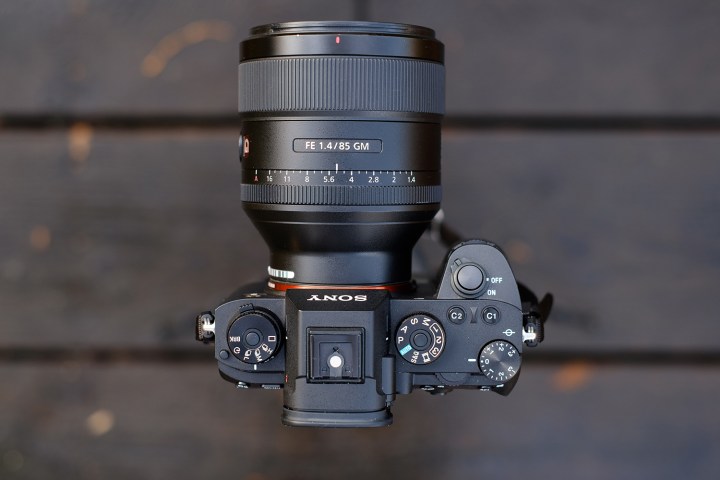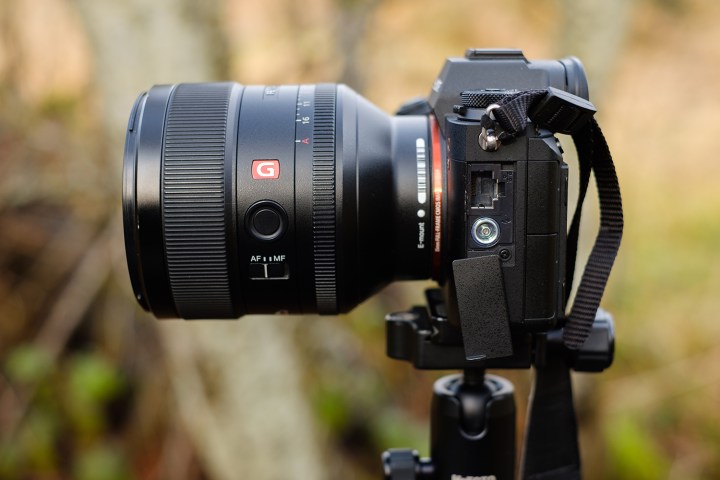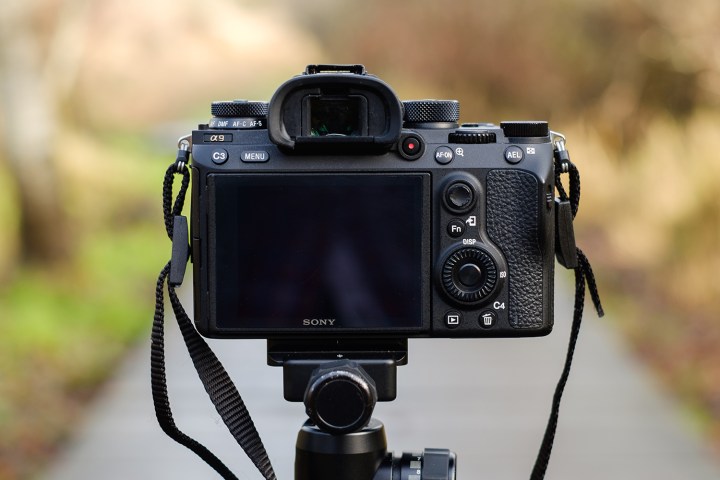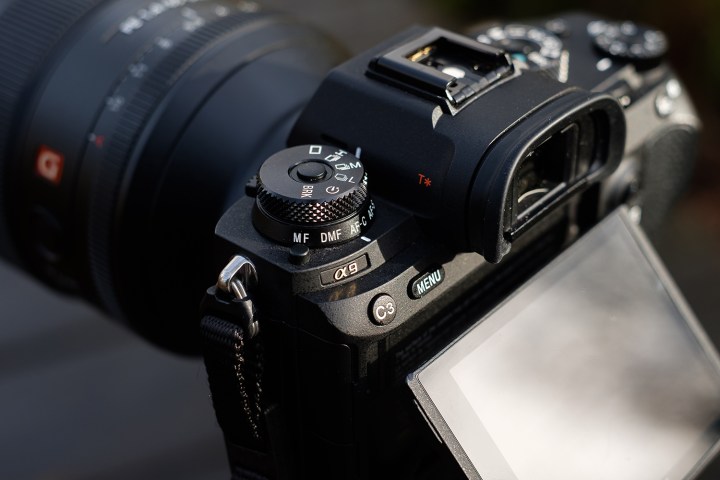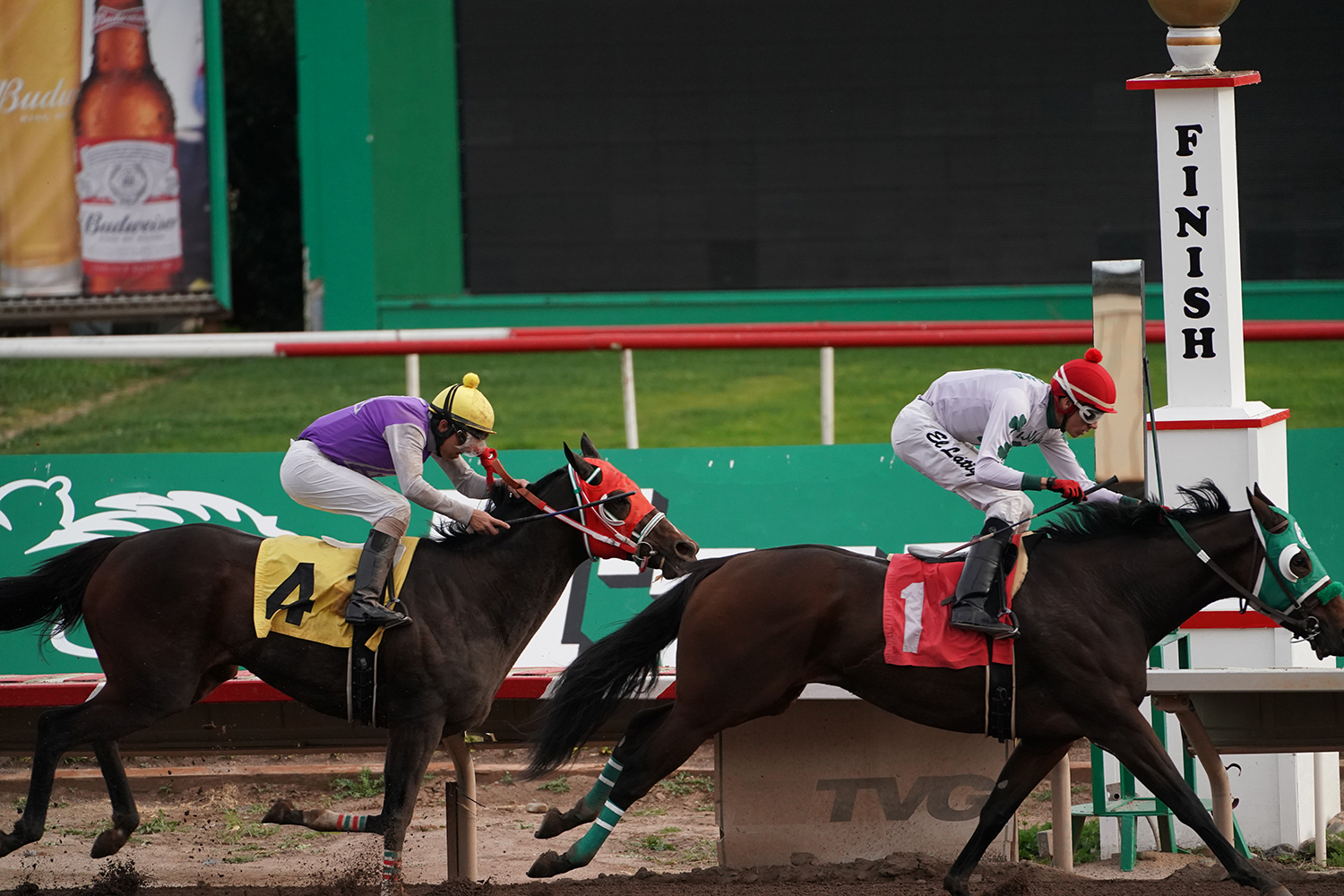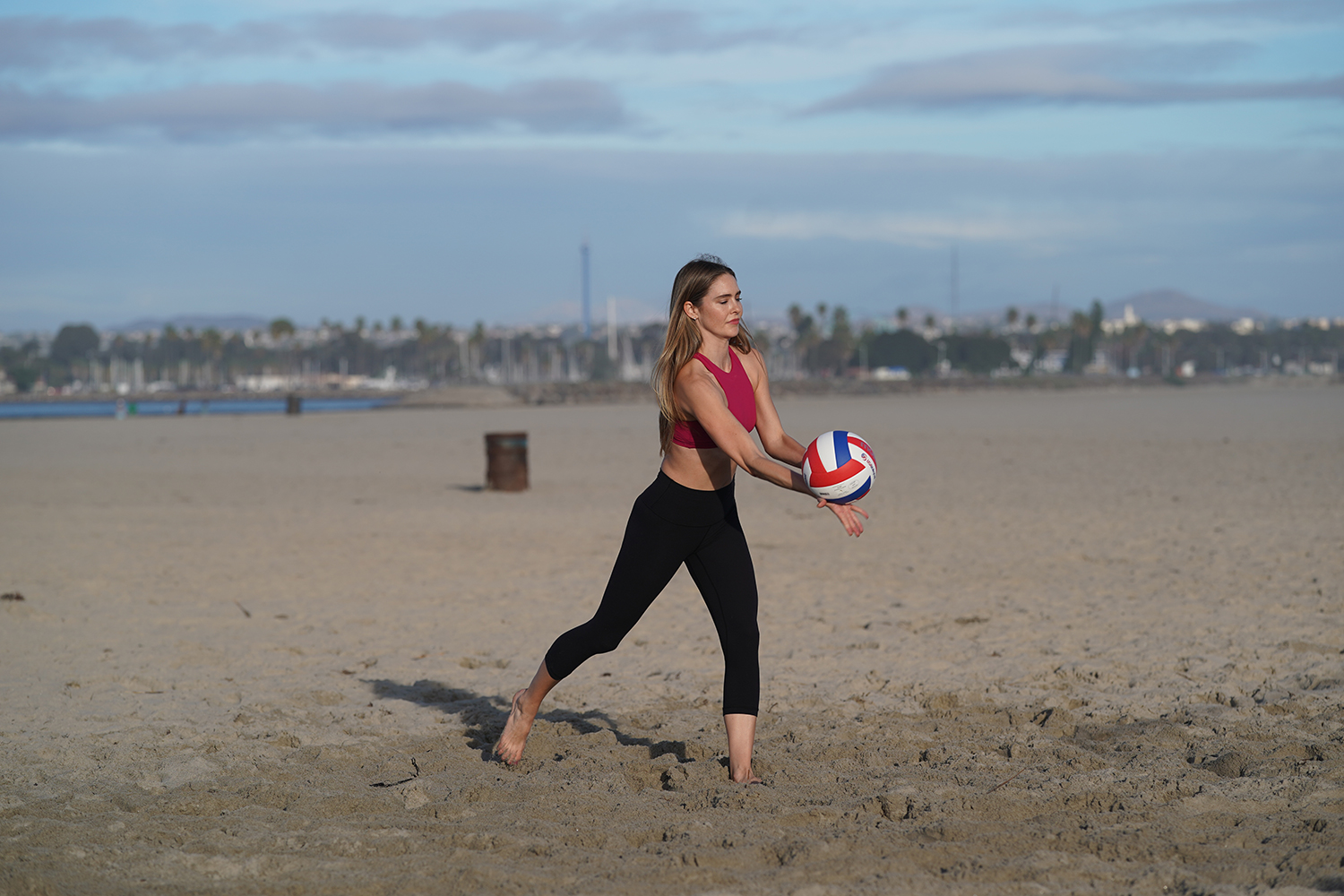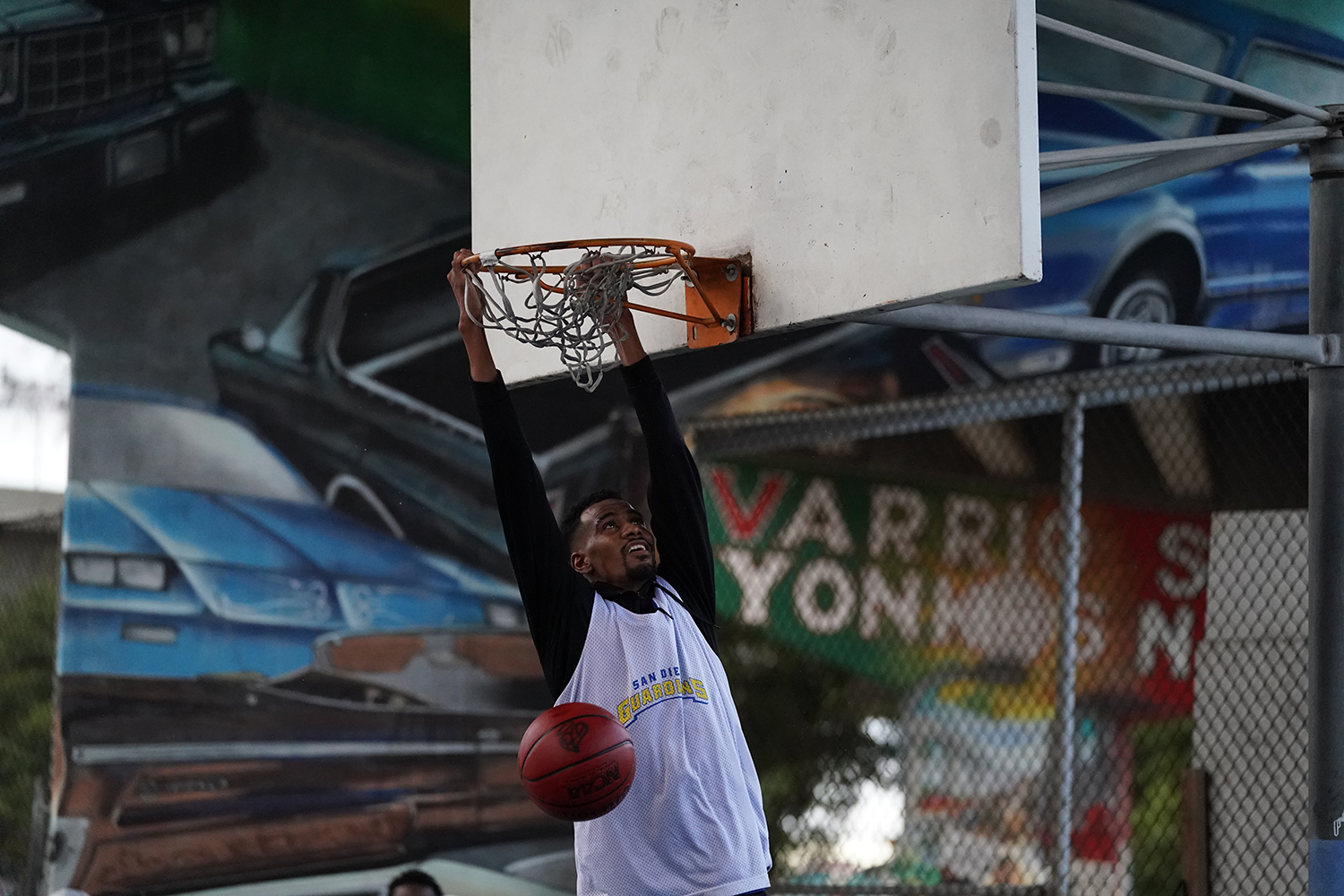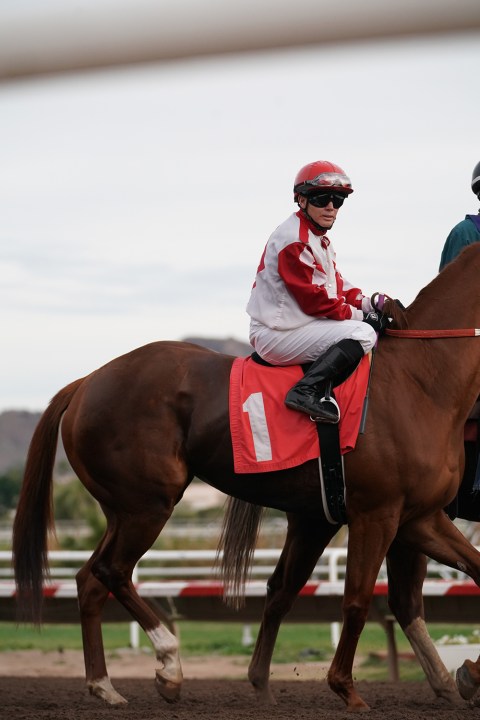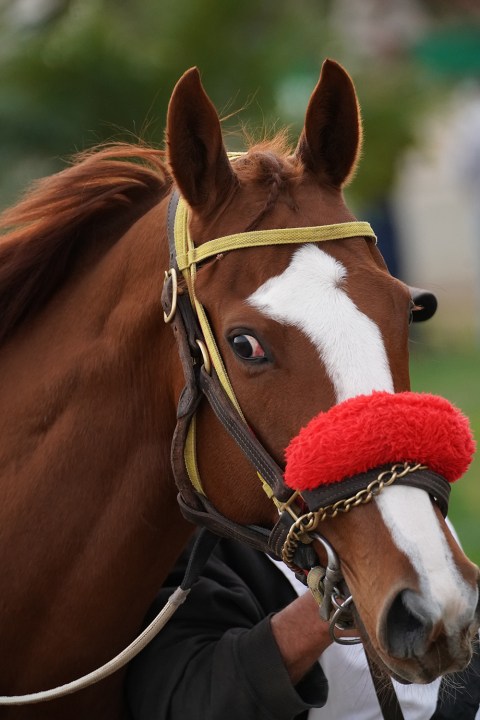- 20 fps continuous shooting
- No-blackout viewfinder
- 693-point AF system
- Great image quality
- Strong 4K video quality
- Inscrutable menu system
- Battery life still lags behind DSLRs
With an MSRP of $4,500, the A9 is Sony’s most expensive mirrorless camera, and also the best one for those who want to capture fast action. Packed with a 24.2-megapixel full-frame sensor, the A9 grabs up to 20 frames per second (fps) and has a world-class autofocus system for keeping up with moving subjects. On top of this high-quality foundation is blackout-free shooting, which means you can effortlessly track your subject in the viewfinder as the electronic shutter (silently) clicks away, a feat no other camera can perform.
It’s a specialist’s camera, to be sure, one built to win over professional sports photographers from the likes of the Canon EOS-1D X Mark II and Nikon D5. But where those DSLRs have gained bulk in the form an integrated vertical battery grip, the A9 maintains the svelte profile of Sony’s Alpha line of mirrorless cameras, with essentially the same dimensions as the base-level A7 III that costs less than half as much. A battery grip is optional for those who need to the extra runtime or better ergonomics. This means you get pro-level power (and price), but in a form factor that can scale to meet your needs.
But no camera is complete without lenses, and Sony’s E-mount hasn’t always had a good selection of long glass, preferred by sports and wildlife photographers. Fortunately, that is starting to change, and Sony even has a 400mm f/2.8 prime now, a $12,000 behemoth of a lens that’s a go-to focal length for many sporting events. All of this adds up to a mirrorless system that has grown very competent for pro sports and action shooters.
Design and Usability
The Sony A9 looks quite familiar to anyone who’s seen, read about, or handled an Alpha-series mirrorless camera. With the lens off, the black-bodied interchangeable lens camera is a compact 5 x 4 x 2.5 inches and weighs 24 ounces with the battery. The body has built-in 5-axis image stabilization, helping keep both stills and videos steady.
The A9 does offer one notable exterior difference from A7 cameras: a layer-cake dial on the left shoulder for setting drive mode and focus mode. This is a welcome addition, addressing one of our continued complaints with the Alpha series about the lack of direct access control. You’ll also find four custom keys — two on top, two on back — so setting this camera up to work the way you want it to shouldn’t be too hard.
The key features on the back are the 3-inch tilting LCD touchscreen with a decent 1.44 million pixels and a 0.5-inch OLED electronic viewfinder (EVF) with 3.7 million pixels. There are better-quality screens out there, but the EVF is excellent. Awkwardly nestled just to bottom right of the EVF is the movie record button. If you find it hard to reach, you can always reassign the function to a custom key.
Related
Stadium sports photographers will be very pleased to find an Ethernet jack built in, in addition to USB and HDMI connections. Dual SD card slots live on the opposite side, which you may need if you plan to actually utilize that 20 fps burst rate. For best performance, use the fastest speed and highest capacity SD cards you can afford. Wireless connectivity options include Wi-Fi, NFC, and Bluetooth (for location, date, and time stamps when paired with a phone) are available to share images.
Battery life has taken a significant jump forward for Sony (although, now surpassed by the newer A7 III) and is rated for 480 shots with the EVF or 650 with the LCD. While high for mirrorless, these numbers are still far from what a professional DSLR can do thanks to its low-power optical viewfinder. Sony’s dual battery grip triples battery life, so serious shooters may want to consider investing in it.
Performance
When the A9 launched, we were treated to preproduction a unit at a special press even and really enjoyed using the camera for a variety of sports. Now a year later, armed with a final production model, we are pleased to report than the sheen hasn’t worn off. The A9 is as engaging and entertaining as ever, and remains one of the most impressive cameras we’ve ever used.
Since one of A9’s claims to fame is its high speed, we set off for a local racetrack to see how well the camera could keep up with thoroughbreds. Unfortunately, Sony’s 400mm f/2.8 wasn’t available for this review. Still wanting to get as close to the action as we could, we matched the 70-200mm f/2.8 G Master lens with a 2x teleconverter and — voila! — we had our 400mm (albeit, with a slower effective aperture of f/5.6).
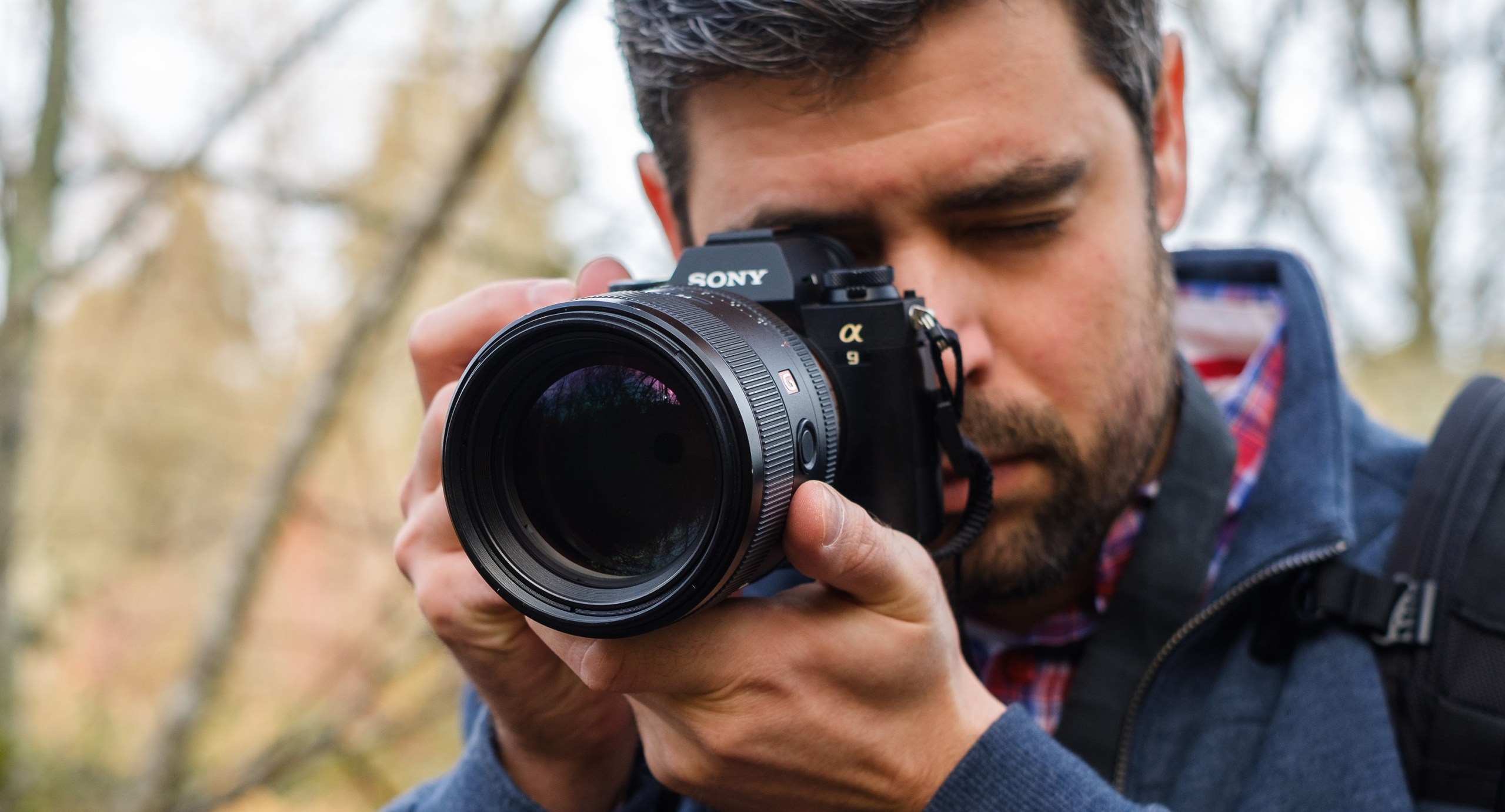
Along with this zoom — which we feel is one of Sony’s best lenses — we had an 85mm f/1.4 prime, a 1.4x teleconverter, and the dual battery grip.
The sensor in the A9 achieves its high speed thanks to a “stacked” design, technology first introduced in the Cyber-shot RX100 IV and RX10 II cameras. The A9 marks the first time a stacked sensor has appeared in a full-frame sensor. Together with the new Bionz X image processor, the A9 delivers performance we haven’t seen before in mirrorless and DSLR cameras.
Working with the new Bionz X image processor, the stacked sensor can output 20 fps RAW continuously — up to a staggering 362 shots before slowing down. In comparison, Canon’s 1D-X Mark II can handle up to 14 fps and Nikon’s D5 goes up to 12 fps. The A9’s fast clip is thanks in part to an electronic shutter, which means there’s no physical shutter curtain — let alone a DSLR’s mirror — to move out of the way between frames. The electron shutter can also reach shutter speeds of 1/32,000, four times faster than the fastest mechanical shutters.
The stacked sensor can output 20 fps continuously — up to a staggering 362 RAW photos.
Of course, keeping up with that speed requires a powerful autofocus system. The A9 features 693 phase-detection AF points along with 25 contrast-detect points. The phase-detection points cover 93-percent of the frame, and that broad coverage means and increased density should translate to more accurate results. And yes, continuous autofocus is available at 20 fps.
In January 2019, Sony unveiled a major update to the A9’s AF system with the addition of Real-time Eye-AF and Real-time Tracking coming via firmware. Real-time Eye AF refines the already excellent Eye-AF found in many Sony cameras. It can now automatically detect a subject’s eyes without the user having to press a button, and users can choose between the right, left, or closest eye. Real-time Tracking, a feature built into the new A6400, uses a new algorithm based on deep learning for object recognition. It also processes color, subject distance (depth), pattern (brightness), as well as spatial (distance) information to offer significantly improved AF tracking performance. Combined, these two new features will keep focus locked on a human subject even if the person turns away from the camera.
We briefly used a beta version of the new firmware, version 5.0, and can attest to its enhanced capabilities. It made a really good camera even better. Firmware 5.0 will be available in March 2019, while firmware 6.0 — which expands Eye-AF to include support for non-human eyes — will arrive later this summer.
During our initial hands-on session with the A9, a standout feature was the blackout-free display. With every camera made before the A9, even mirrorless cameras operating in electronic-shutter modes, the screen will momentarily turn black when the picture is taken. So, as your subject moved, you had to predict where it would go. Now, high-end cameras have always minimized viewfinder blackout so as to make this process easier, but the A9 has absolutely no blackout at all. You can blitz along at 20 fps and still track your target as if watching a movie. This was great even with relatively predicable motion, such as in our horse racing scenario.
Of course, you won’t always need 20 frames per second, even for sports. The A9 includes options for Low, Medium, and High continuous shooting (5, 10, and 20 fps, respectively) so you can pick the speed you need. Wanting to test its limits, we naturally shot in the High setting, although we did limit ourselves to Extra Fine JPEGs, worried that shooting that many RAWs would have eaten up too much space on our memory cards.
Speaking of horses, the A9 did a great job capturing them on the hoof. Although we’re hardly race track photographers, by setting the camera to AF-C and burst to High, we got a ton of keepers. The biggest challenge is going through hundreds of photos later on the computer. As you move through them on the monitor, it’s like watching a 24MP slow-motion movie. Very cool, yes, but also somewhat daunting.
As we zoomed in on many images, we were impressed by the rich colors and zeroing in on clumps of dirt kicked up by the horses thundering by. In between races, we visited the paddock area to grab close-ups of the horses and their handlers. Overall, picture quality was top-notch, but if you’re after the most resolution or dynamic range, you can always opt for the 42-megapixel A7R III.
The A9 has a native ISO of 100-51,200 but can be expanded down to 50 and up to 204,800. In our tests, images were solid up to ISO 16,000, with artifacts becoming more noticeable as we made upwards adjustments. Surprisingly, 204,800 is actually usable if you do some cleanups in post processing and don’t mind losing some resolution.
Another cool feature is silent shooting. When DSLRs are rapid-firing, there’s a noticeable clack-clack-clack of the mirror and shutter. With the A9, the sound of the electronic shutter is fake — you can simply turn it off if you want to. Press the shutter and you can’t even tell if it’s working, but a virtual gray frame flashes continuously to let you know you’re taking pictures.
User interface and video
Since this is a Sony camera, it’s time for the obligatory rant about the menu system. Let’s call it inscrutable, to be charitable. It’s getting tiresome complaining about this menu layout and terminology. We highly recommend any buyer of an A9 or other sophisticated Sony A series model to read the full printed manual available from the Sony website. We hope to live long enough to see a complete revamping of this menu system, but it’s starting to feel like that is only becoming less likely.
But also since this is a Sony, the A9 comes with a healthy dose of powerful video features. 4K video with full pixel readout is possible in both full-frame and Super35 crop modes, thanks again to the stacked sensor technology. This helps limit artifacts like moiré while delivering sharper video quality. With a fast card and Sony’s XAVC S high-bitrate format, you can record 4K/30p at 100Mbps.
What’s missing are the advanced video color profiles, like S-Log and HLG. Apparently, Sony doesn’t see videographers gravitating toward the A9, but it’s a bit odd that these features are available in the $2,000 A7 III, but not a $4,500 flagship. That said, video quality is still very good, and with photographers having to double as videographers these days, cameras like the A9 offer the versatility they need. We can’t imagine a wedding photographer or their clients being disappointed in the color and sharpness motion the A9 delivers.
Warranty
The camera has a one-year warranty covering parts and labor.
Our Take
Even with our squawks about the menu system, the Sony Alpha A9 is very special. For $4,500, it should be outstanding and we’re happy to say it is. At this price, and with features like Ethernet built in, it’s targeted to professional sports photographers, but anyone in need of a super fast camera will appreciate it. And while the 20 fps spec is a headline feature, the A9 does a terrific job with non-moving subjects, as well, delivering rich, accurate color and more than enough detail for most situations.
The A9 is also more than just a camera. It’s an example of what mirrorless cameras are capable of, and proof that they can do anything a DSLR can — and more. The A9 is a forward-thinking product that, even a year into its life, continues to impress us. Future photographers and tech enthusiasts will undoubtedly look back on it as a turning point in the industry.
Are there better alternatives?
Not really, but you’d have a hard time taking the Canon EOS-1D X Mark II DSLR away from the many sports photographers on the nation’s sidelines. That 20.2MP full-frame workhorse costs $5,499 and has a top burst speed of 14 fps so the A9 is a relative bargain by comparison. For the record, the racetrack photographer was using a 1D X.
As for mirrorless cameras, there’s really nothing that competes with the A9.
How long will it last?
The Sony Alpha A9 was released in May 2017 and has undergone firmware and software upgrades — and huge enhancements are planned for 2019. In January 2019, Sony announced major upgrades coming in firmware versions 5.0 and 6.0; the first, which we tested in beta, is due in March with the second arriving in summer 2019. In addition to autofocus improvements, the new firmware will introduce a host of quality of life improvements.
Should you buy it?
Most of us don’t need this camera, but if shooting sports is your raison d’etre, by all means buy it. We really enjoyed shooting with it and are sure you will too — but please read that manual cover to cover to get the most out of it.
Updated with information on upcoming firmware releases, and our impressions of using a beta version of firmware 5.0.


